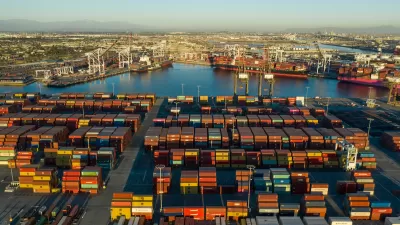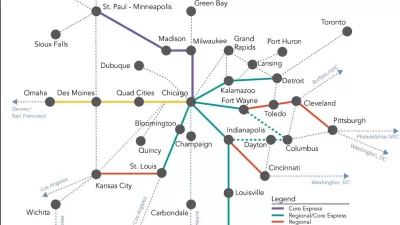As China embarks on the greatest rail-building investment since the U.S. built its transcontinental railroad, this article points to the urgent need to reform its state-controlled pricing system, both for freight and passengers, to make it effective.
"For decades, China has neglected investment in railroads in favor of building highways", resulting in an 'oversubscribed' rail system - both for freight and passengers.
"The nation's rails carry a quarter of global train cargo and passenger traffic on only 6% of the world's track, making its system the busiest on the planet."
"China is now undertaking the world's biggest railway expansion since the U.S. laid its transcontinental line in the 1860s. Beijing plans to spend $248 billion through 2020 on 75,000 miles of new track, for both freight and high-speed passenger lines. At that point, China's high-speed passenger network will likely be the biggest on earth."
However, this huge infrastructure investment belies China's main rail problem, according to Business Week - it's pricing system.
"China's Ministry of Railways, which operates the railroads, has a net profit margin of less than one percent on revenues of about $35 billion. The Ministry maintains majority control over all rail lines and sets freight rates for farm products and ticket prices for migrant workers at artificially low levels. It wouldn't comment for this article.
That pricing policy is politically smart but commercially ruinous.
Pressure on the Ministry of Railways to find the billions needed for all this expansion may eventually force it to loosen its grip on pricing and cede control of at least some of the railroads. "There is a lot of capital now that is very interested in building railroads," says Zhao Jian, a professor at Beijing Jiaotong University who researches railway reforms. Until that happens, China's rail industry will continue to attract more business than it can handle and fewer investors than it needs."
FULL STORY: China's Great Railway Expansion

Planetizen Federal Action Tracker
A weekly monitor of how Trump’s orders and actions are impacting planners and planning in America.

Maui's Vacation Rental Debate Turns Ugly
Verbal attacks, misinformation campaigns and fistfights plague a high-stakes debate to convert thousands of vacation rentals into long-term housing.

Restaurant Patios Were a Pandemic Win — Why Were They so Hard to Keep?
Social distancing requirements and changes in travel patterns prompted cities to pilot new uses for street and sidewalk space. Then it got complicated.

In California Battle of Housing vs. Environment, Housing Just Won
A new state law significantly limits the power of CEQA, an environmental review law that served as a powerful tool for blocking new development.

Boulder Eliminates Parking Minimums Citywide
Officials estimate the cost of building a single underground parking space at up to $100,000.

Orange County, Florida Adopts Largest US “Sprawl Repair” Code
The ‘Orange Code’ seeks to rectify decades of sprawl-inducing, car-oriented development.
Urban Design for Planners 1: Software Tools
This six-course series explores essential urban design concepts using open source software and equips planners with the tools they need to participate fully in the urban design process.
Planning for Universal Design
Learn the tools for implementing Universal Design in planning regulations.
Heyer Gruel & Associates PA
JM Goldson LLC
Custer County Colorado
City of Camden Redevelopment Agency
City of Astoria
Transportation Research & Education Center (TREC) at Portland State University
Jefferson Parish Government
Camden Redevelopment Agency
City of Claremont





























